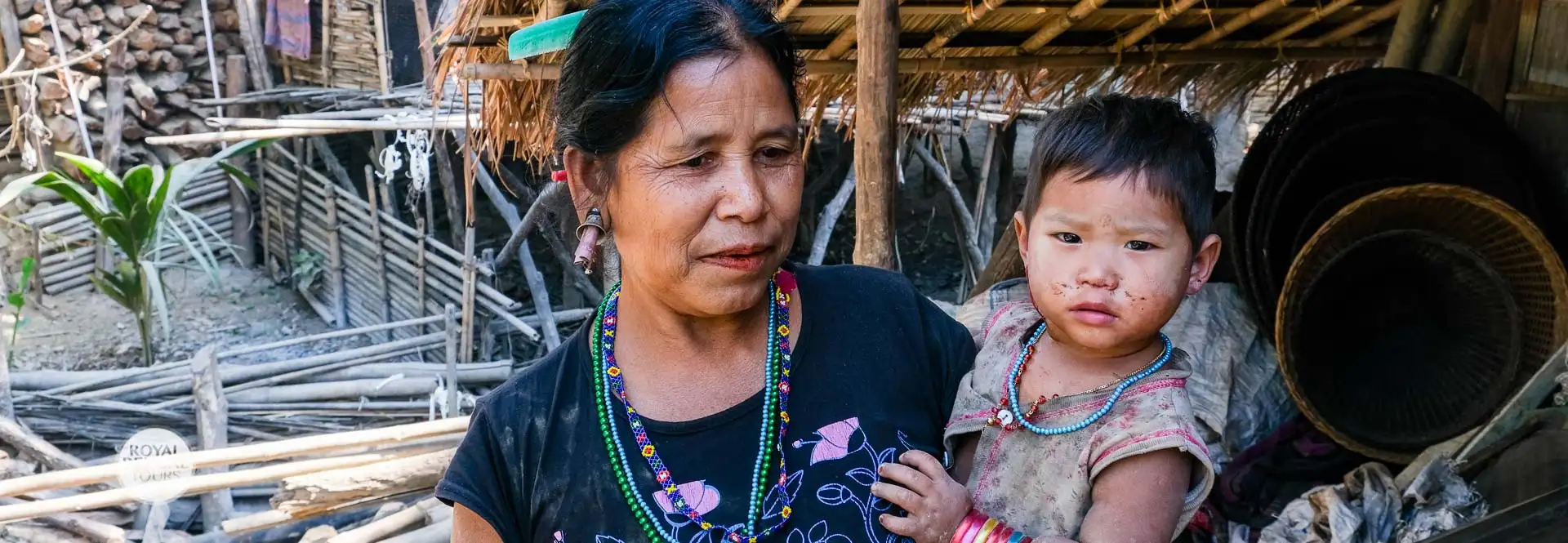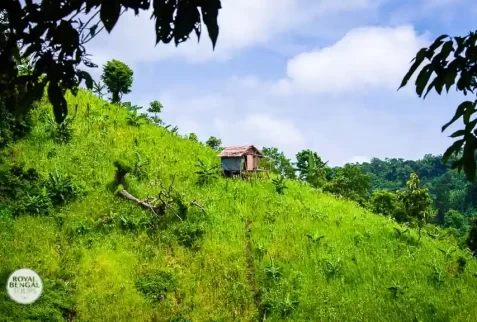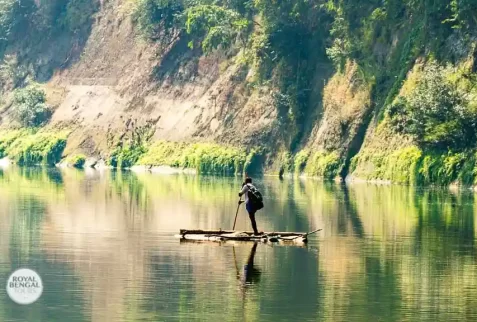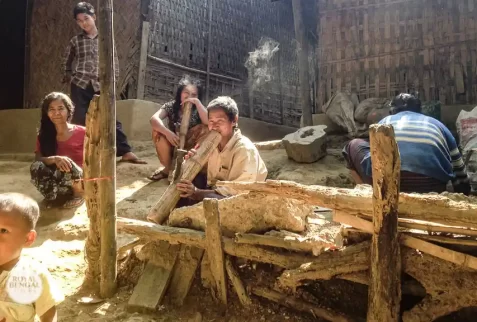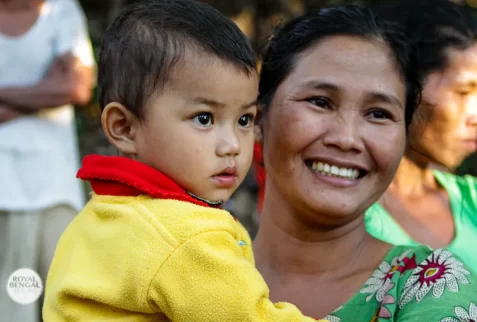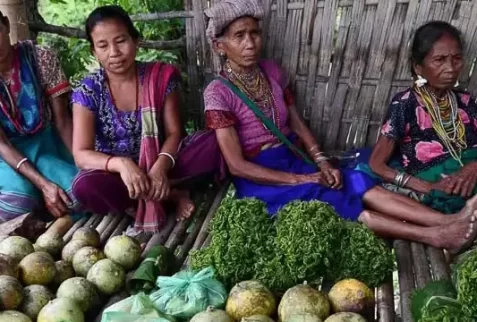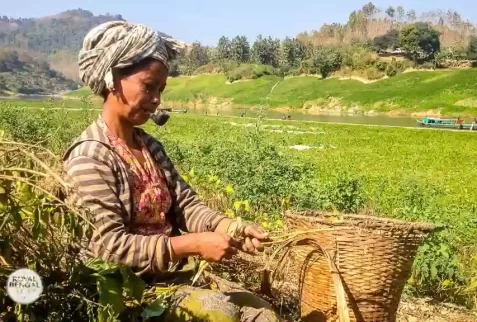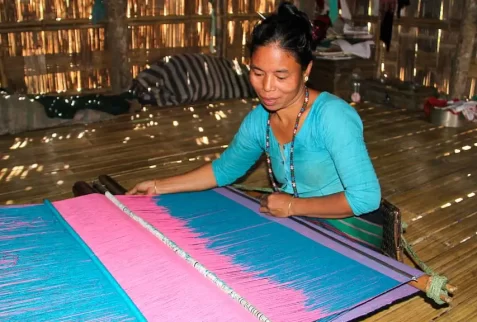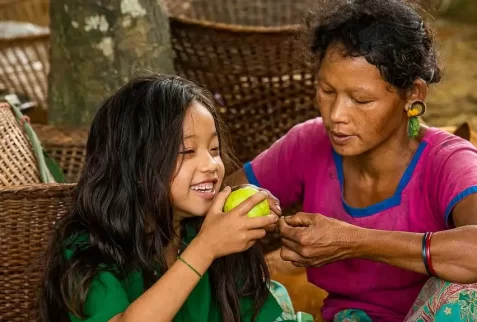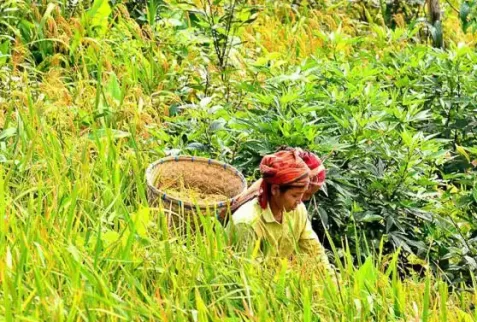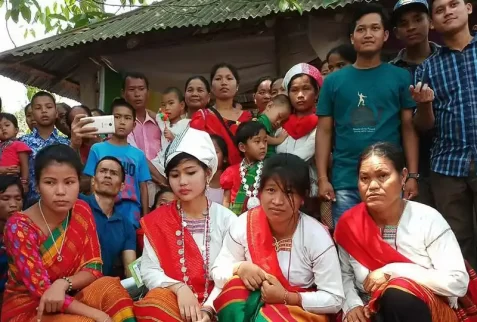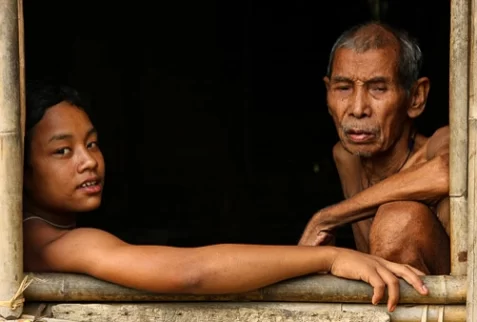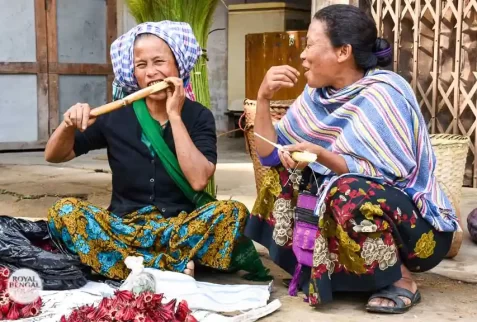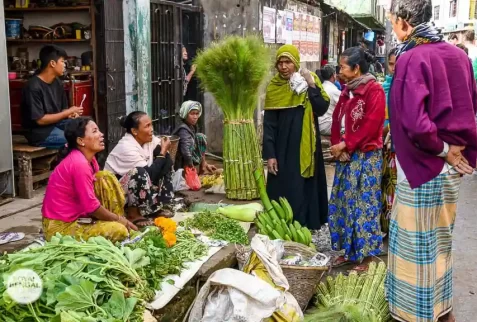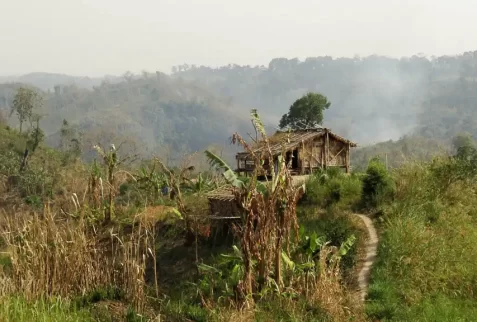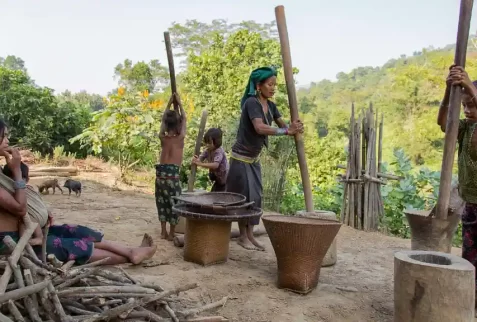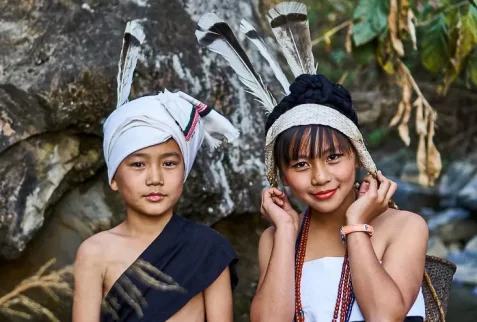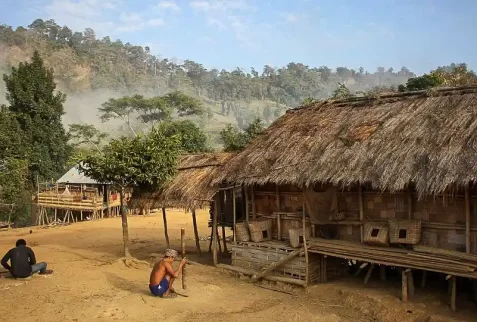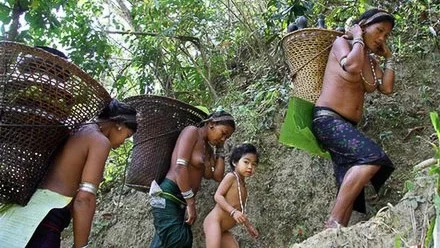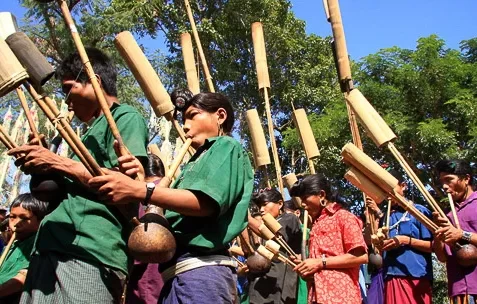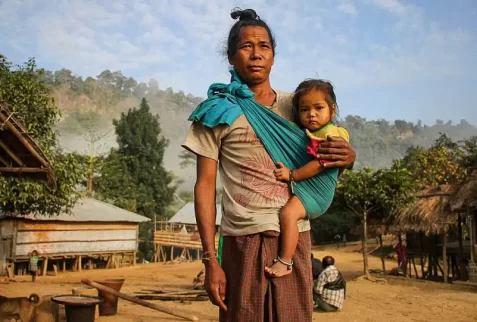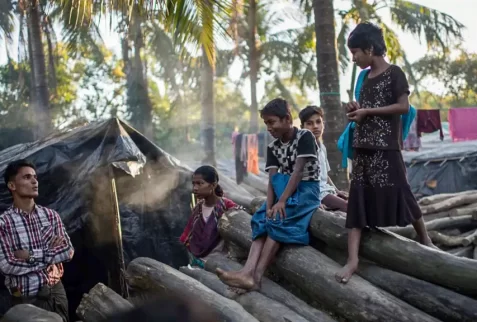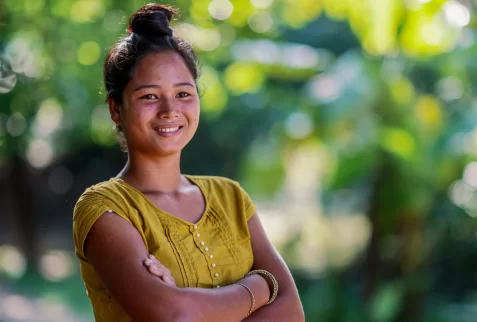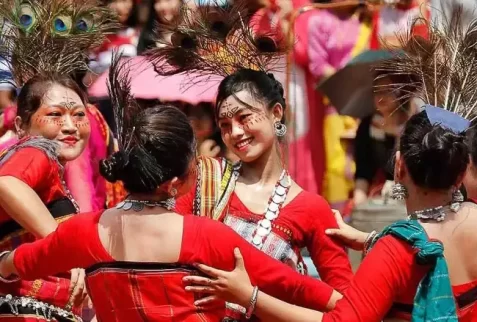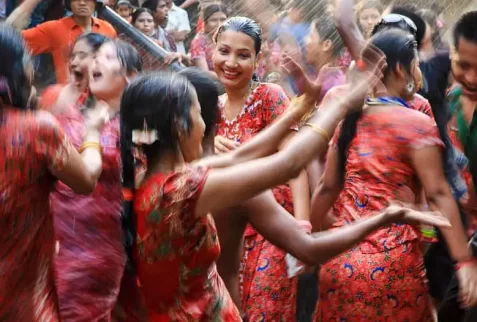Your cart is currently empty!
The lifestyle and culture of the ethnic communities are very different from that of the Bangladeshi people of the plains. Some tribal groups are matriarchal, and most make their homes from bamboo and raw wood, covered by thatched roofs of dried straw and leaves. Most tribes are Buddhist, Animist, or Hindu, though small numbers have embraced Christianity.
Ethnic communities are different from each other, having their own distinctive rituals, rites, languages, and dress. Tribal women are exceptionally skilled in making handicrafts, while some men take pride in hunting with bows and arrows.
The earliest ethnic people to move into the Hill Tracts were the Kuki group – that is Lushai, Pankhu, Mro, Kyang, Khumi, and Bawms. A second migration was made by the Tripura group formed by Murung and Tripura. The last group was of Arakan origin: Ryang, Chakma, and Marma. (Source: Haque, 2001; p 50) As a result of Burmese invasions, by the end of the 18th century two-thirds population of Arakan fled to the Chittagong Hill Tracts. Comparatively, the Chakmas and Marmas came in recent times. (As Haque states, 2001, p 50): “The Chakmas were ousted by the Marmas from Arakan and entered into the Chittagong Hills. The Kuki tribes yielded to the Chakmas and went to the northeast. The Chakmas finally settled in the central and northeastern parts of the hills while their former territory was occupied by the Marmas.

